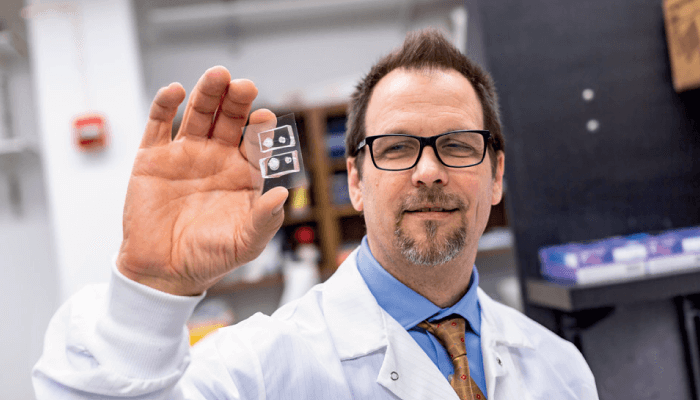
Researchers at the University of Texas at Dallas have developed a technique for studying the eye’s repair mechanisms. Using microfluidic devices, the team is fabricating fibrils to study the role of corneal keratocytes in repairing tissue. The research could help develop therapies to reduce corneal scarring and guide efforts to engineer tissue replacements (1).
A new “Smart LED Contact Lens” could revolutionize the development of wearable diagnostic and therapeutic devices for patients with diabetes, enabling the photonic diagnosis of diabetic retinopathy. The device not only enables monitoring of blood-sugar level in real time, but could also treat the condition (2).
An eye movement test developed by University of Liverpool researchers could improve our understanding of how our brains age. Using an infrared eye tracker, the method investigates inhibitory control in the eye – which is related to the effects of aging (3).
A self-moisturizing contact lens developed in Japan could help fight the symptoms of dry eye. The technology maintains a layer of fluid between the lens and the eye, using a current to move liquid up from the patient’s tear reservoir to the surface (4).
New research has uncovered the process by which synapses in the brain are damaged in MS, and how this contributes to neurodegenerative symptoms. The study also shows the potential for gene therapy in preserving neural circuits, and protecting against vision loss caused by the disease (5).
References
- KH Lam et al., Biomed Microdevices, 1, 99 (2019). Available at: https://bit.ly/383N8AR
- GH Lee et al., Nat Rev Mater, 149, 5 (2020). Available at: https://go.nature.com/2UwFdIe
- PC Knox et al., Peer J, e8401, 8 (2020). PMID: 31942260.
- S Kusama et al., Adv Mat Tech, 5, (2020). Available at: https://bit.ly/2UwGi2K
- S Werneburg et al., J Immunity, 167, 52, (2020). Available at: https://bit.ly/2vPzZgl
